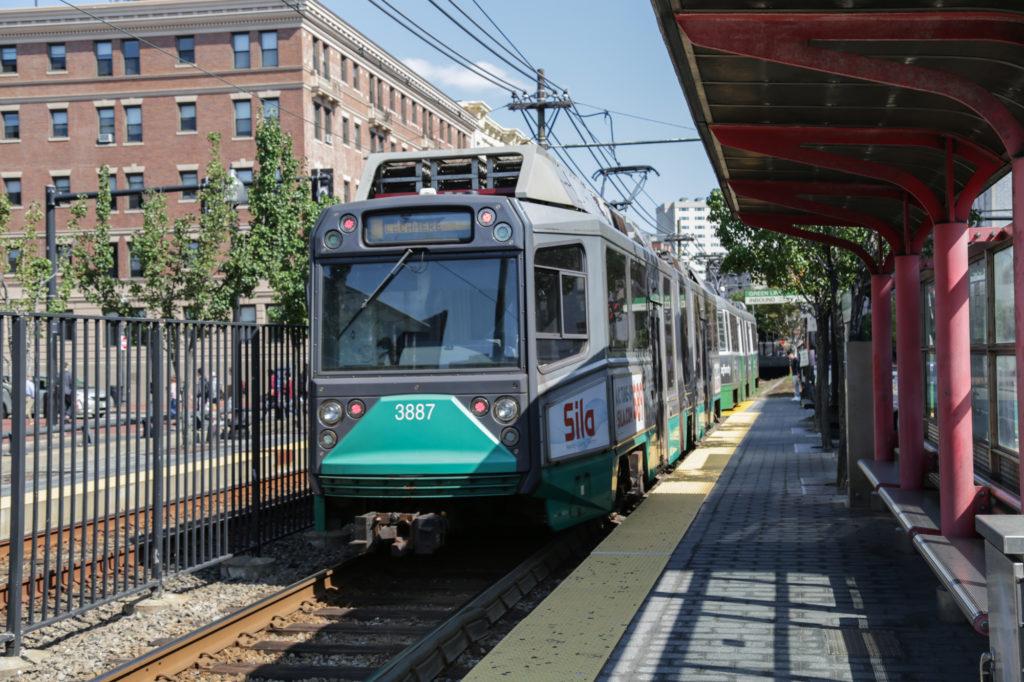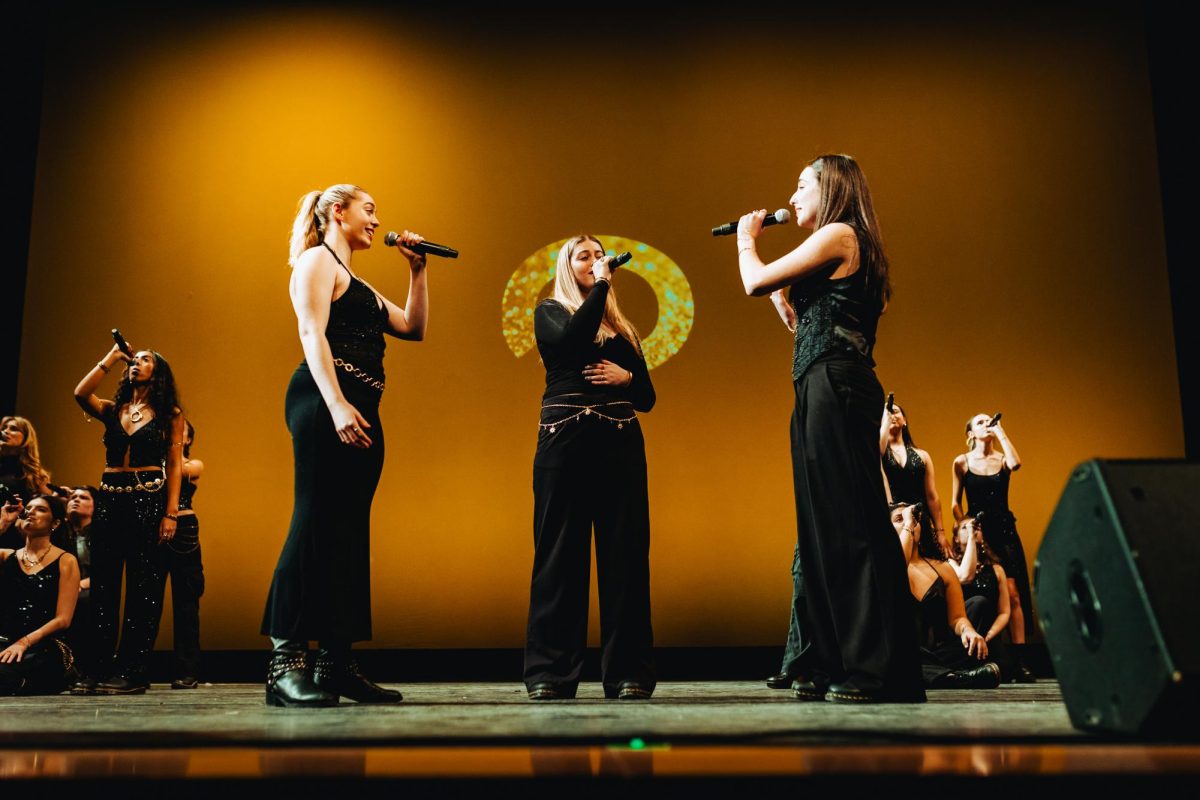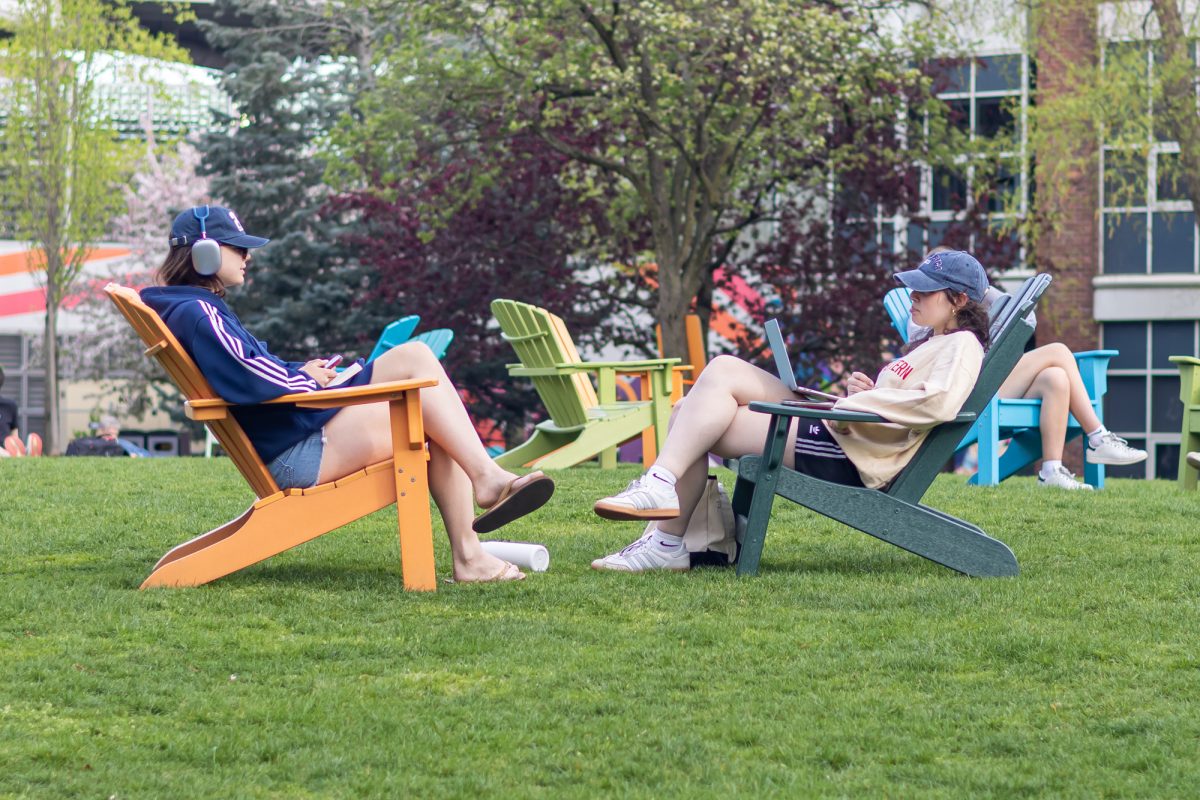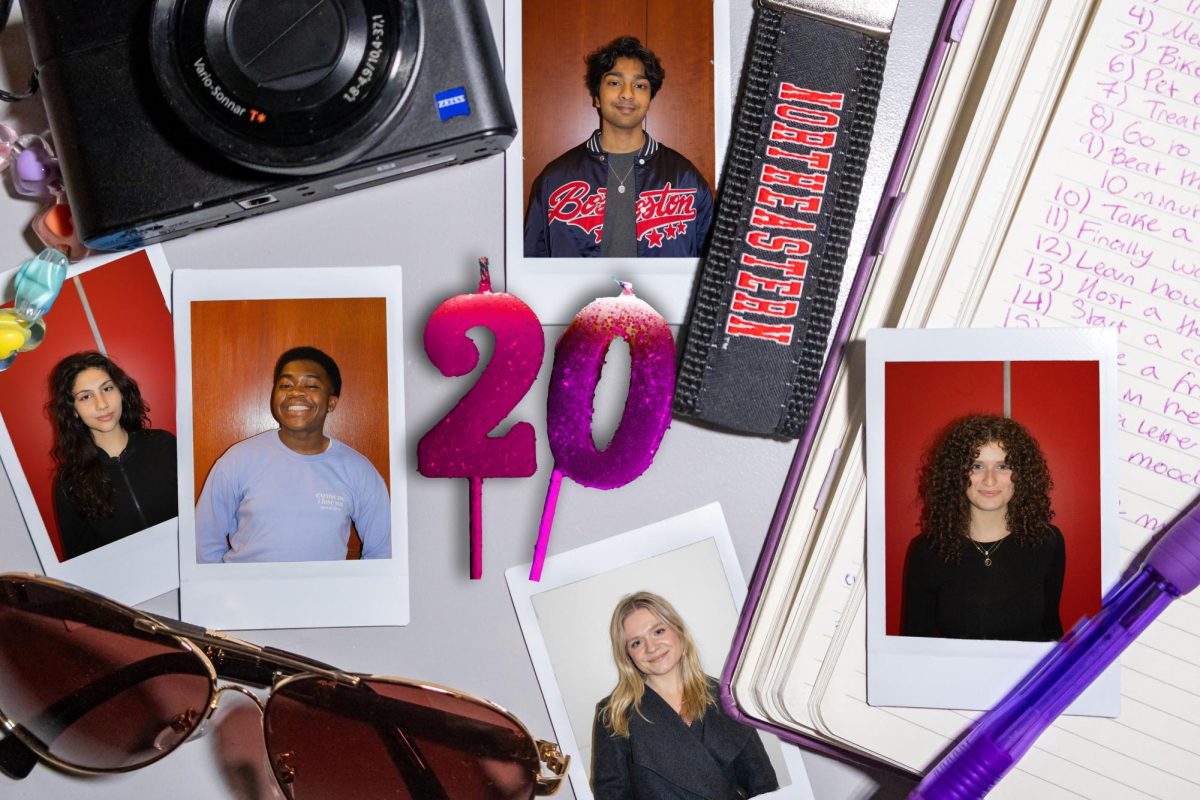MBTA changes will allow riders to board at every door
Changes to the MBTA’s fare collection system will allow riders to board the green line at all doors. / Photo by Catherine Argyrople
September 27, 2018
Ask riders about their experiences with Boston’s public transit, and they’ll likely have a prepared list of complaints about the system.
The Massachusetts Bay Transportation Authority, or MBTA, has identified some areas for improvement, including loading times on above-ground transit and possible updates to the fare card system. With its new automatic fare collection system, called AFC 2.0, MBTA officials aim to modernize and streamline customer interactions.
In an effort to increase accessibility for riders, the new fare collection system will accept payment by smartphones, contactless credit cards and feature an updated CharlieCard system. The changes also intend to ease transfers between different branches of the MBTA and decrease waiting times at above-ground stations.The system will be implemented in May 2020, according to the MBTA website.
“As everyone is aware, fare collection impacts everyone, all of our riders are impacted by our fare collection system, and there’s some limitations of our existing system,” said Laurel Paget-Seekins, MBTA director of Fare Policy and Analytics, said in a public advisory meeting.
Riders can get the current generation of CharlieCards at 17 bus and subway stations across the Greater Boston area and at certain retail stores. The new system will offer cards at all fare machines, and will link those cards to an account instead of storing the value on the card itself.
An account-based system will keep funds with the rider even if physical cards are lost and will allow riders to refill their cards at machines or online. Additionally, the card will cost a currently-undecided fee.
This fee would set up a system that would allow riders to “go into the negative,” said Laurel Paget-Seekins, director of Fare Policy and Analytics at the MBTA at a public advisory meeting on Sept. 18. If riders are unable to refill their card, they can still ride the transit system back from more removed areas.
33-year-old Dorchester resident and daily commuter Lisa Ahlgren described a fare card that stores funds on the card, not an account, as a “sort of archaic payment system for the T.”
“I myself and most people that I know — commuters that I know — have lost cards at some point and lost all the funds on them and that was frustrating,” Ahlgren said.
The new system will no longer accept cash payments at fareboxes on buses and trolleys. Soumya Ghosh, a 25-year-old Allston resident, uses the 66 bus most often, and hopes that this will help with efficiency on buses and the Green Line.
“Without cash, I think the Green Line and the buses will be faster, just because at stops people will just swipe on, or whatever, and be done with it instead of having an additional person who people might have to route around them to get on, who’s trying to put in money and everything,” Ghosh said.
Program Manager from the MBTA David Sikorski said cash will not be phased out of the system entirely. Riders will still be able to pay with cash at fare machines that Sikorski said will be within 1,000 feet of any ride.
“While you can’t use cash on the vehicle itself, you can still get your ticket with cash anywhere in the network,” Sikorski said.
Palma McLaughlin, a Dorchester resident, said she is concerned the switch will limit accessibility to low-income riders who currently use cash and change as their only payment for fares. 23 percent of Americans don’t own a smartphone and 21.7 percent of the Massachusetts population are unbanked or underbanked.
“If you look at the intersection of those things, they cannot set up fund accounts,” McLaughlin said. “They don’t have the money for that, they don’t have the access to that.”
The fare collection changes also aim to speed the boarding process. On Green Line trains, buses and the Mattapan trolley, passengers will be able to board at all doors, with a system of “validators.” One at each door will replace the fareboxes at the front of the vehicle and will accept all forms of payment. According to the MBTA in a presentation at a public advisory meeting, loading through all doors will increase bus speeds by about 10 percent.
According to the MBTA in a presentation at a public advisory meeting, the new fare collection system will “streamline” rider experience by using the same system for bus, subway, commuter rail and ferry. Commuters will be able to use the same methods of payment for all branches of the transit system.
The project remains in an early stage, and MBTA officials are still working out the details for many elements of the new system, including managing data privacy, improving access to fare cards and sale locations, performing fare inspections and navigating the impacts on fare structure and pricing.
“We’re also working on just going out and meeting people at bus stops, giving them information, so even if people have never heard of the project before they’re getting a chance to give us input and get involved,” said Paget-Seekins, MBTA director of Fare Policy and Analytics.
The MBTA will install the system in stations and vehicles in early 2019 and will open the system to a limited number of pilot users by late 2019. They plan to make the system available to the public in May 2020. It will operate along with the current system for a year. In May 2021, the old system will be completely phased out.
The feedback process won’t end once the system is fully implemented, however. Sikorski said the system will be flexible and adapt to community needs.
“If it’s too busy in an area and we need another machine, if this area is overserved or underserved, we are able to build into the system,” Sikorski said.
Ghosh said he thinks these changes will help with speed and efficiency on above-ground parts of the public transit system, but other parts of the system — like ensuring there’s enough space to comfortably fit commuters, especially at peak times — still need work. Ahlgren, like Ghosh, has other concerns too.
“There aren’t enough trains during rush hour, it’s always crammed, it’s always late,” Ahlgren said. “I have the notifications every day for rush hour delays and when I commute there’s at least a 10 to 15 minute delay every day.”
The MBTA is working on projects to address other concerns. It expanded its bus service beginning Sept. 1 to run until 3 a.m. The Green Line will be extended to run further north to College Avenue in Somerville, with a branch ending in Union Square in Somerville. The Red and Orange Lines will also see a new fleet of vehicles in 2023 with intended improvements in comfort, safety and accessibility. A complete list of renovations and projects can be found on the MBTA website.
Sikorski said he hopes the AFC 2.0 will be one step to a better transit system.
“I think the convenience of having all the modes of travel in one system is going to be a benefit there,” Sikorski said. “So you can add money to your card anywhere. Whether you do it at a machine, in the station, on your website, on your phone — that’s sort of convenient.”







